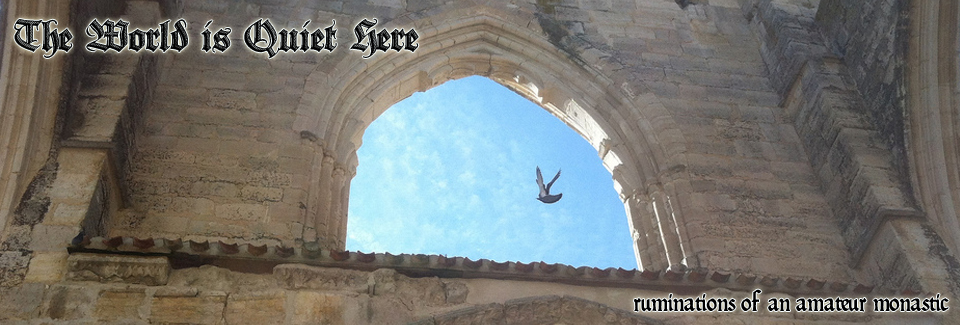Saint Joan

On this day in 1431, one of the most truly remarkable women who ever lived was burned at the stake. She was 19 years old.
She was known as Jehanne la Pucelle (Joan the Maiden), but today we name her Saint Joan of Arc.

She was canonized in 1920, and her memorial was first celebrated on this date just a little more than a century ago today. Coincidentally, the cornerstone of my old parish church of Holy Rosary was laid that same day. This is the reason, I suspect, why a French saint has a stained glass window commemorating her in what was then a German parish.
In 1429 at the tender age of 17, Joan led the French army to a string of victories against the English: the Assault of Orléans (7 May), the Battles of Jargeau (12 June), Meung-sur-Loire (15 June), Beaugency (17 June), Patay (18 June – sometimes called “Agincourt in Reverse”), the Surrender of Auxerre (3 July), the Siege of Troyes (10 July), and finally the Surrender of Reims (16 July).
In just over a month, Joan put together more French victories in the Hundred Years’ War than France without her ever did. She had no military training or experience.
After she arranged for the Dauphin to be crowned King of France, another string of victories followed. Joan was wounded at the siege of Paris, and the French army withdrew rather than face battle without her.
When she was captured by the English, she was subjected to a mock ecclesiastical trial.
The trial was the dramatic encounter between this Saint and her judges, who were clerics. Joan was accused and convicted by them, even condemned as a heretic and sent to the terrible death of being burned at the stake.
Unlike the holy theologians who had illuminated the University of Paris, such as St Bonaventure, St Thomas Aquinas and Bl. Duns Scotus, of whom I have spoken in several Catecheses, these judges were theologians who lacked charity and the humility to see God’s action in this young woman.
The words of Jesus, who said that God’s mysteries are revealed to those who have a child’s heart while they remain hidden to the learned and the wise who have no humility (cf. Lk 10:21), spring to mind. Thus, Joan’s judges were radically incapable of understanding her or of perceiving the beauty of her soul.
They did not know that they were condemning a Saint.
(Pope Benedict XVI, Address of 26 January 2011)
The transcripts of the trial make for fascinating reading.
France before Joan was defeated and her nobility so dejected that Joan had to persuade them to crown the Dauphin as King.
France after Joan had the strength and will to reclaim their land from the English. It is no exaggeration to say that in just 18 months she changed the entire course of the Hundred Years’ War.
This shepherdess from Domrémy had a mission, and she carried it out without question. Admittedly, the instruction was pretty clear.
At her trial, she testified that she had her first vision around 1424 at the age of 12 years. Alone in the fields, she saw visions of Saint Michael, Saint Catherine, and Saint Margaret, who told her to drive out the English and bring the Dauphin to Rheims for his coronation.
She cried when they left, they were so beautiful.
Most of us come to discern our vocation only through prayer and sometimes long stretches of time. Some of us never do, or we run away in fear from what the Lord tells us in our hearts.
Not so Joan. Like the Blessed Virgin Mary and countless other saints throughout time, Joan said “yes”.
Called by the Lord to defend her fatherland, [Joan] responds to her vocation with an enterprise that the entire world – and herself, in the first place – considered impossible; but that which is impossible to men is always possible with the help of God.
(Pope Saint Pius X, Address of 13 December 1908)
We are all called to that “yes”; we are all called to be saints. Nothing is impossible with God.
“I am not afraid, for God is with me. I was born for this!”
(Saint Joan of Arc, 23 February 1429)
On my pilgrimage last year through southern France, in some regions it seemed like every little church had a statue of her or even an altar dedicated to her, often opposite Saint Michael the Archangel. In many places, her altar was also a memorial to the dead of the Great War.

So today, let us pray that we have the strength and fortitude to say “yes” and to go where God calls us, and let us pray for the intercession of Saint Joan.
O God, who in a marvelous manner
inspired Joan the maiden
to defend her faith and her country,
grant at her intercession
that Your Church may vanquish all her enemies
and enjoy abiding peace.Through our Lord Jesus Christ, your Son,
who lives and reigns with you in the unity of the Holy Spirit,
God, for ever and ever.Amen.


